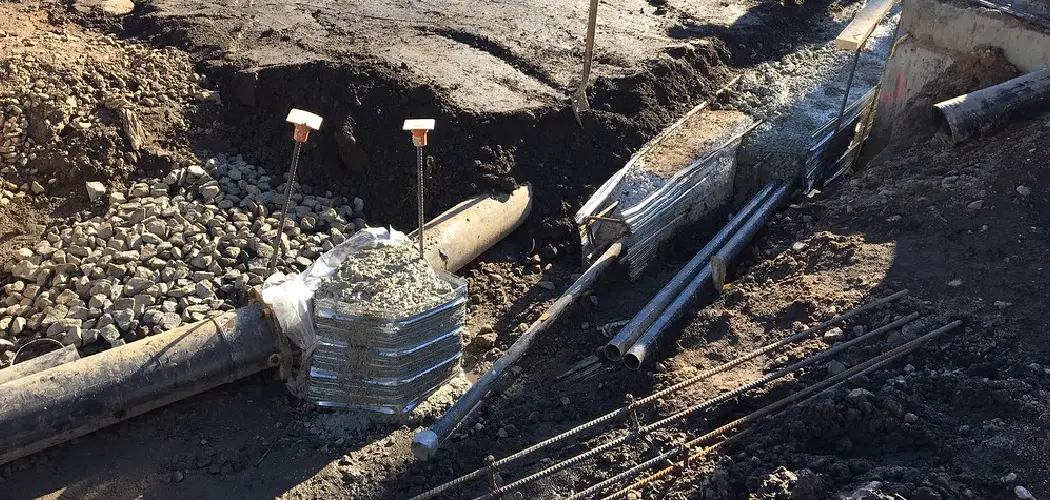Maintaining your plumbing system is crucial to keep it in tip-top shape. When your sewer pipes break or wear out, you need to take prompt action to avoid water damage and health hazards. Backfilling sewer pipes is an effective way to fix broken or damaged pipelines and restore the flow of wastewater.
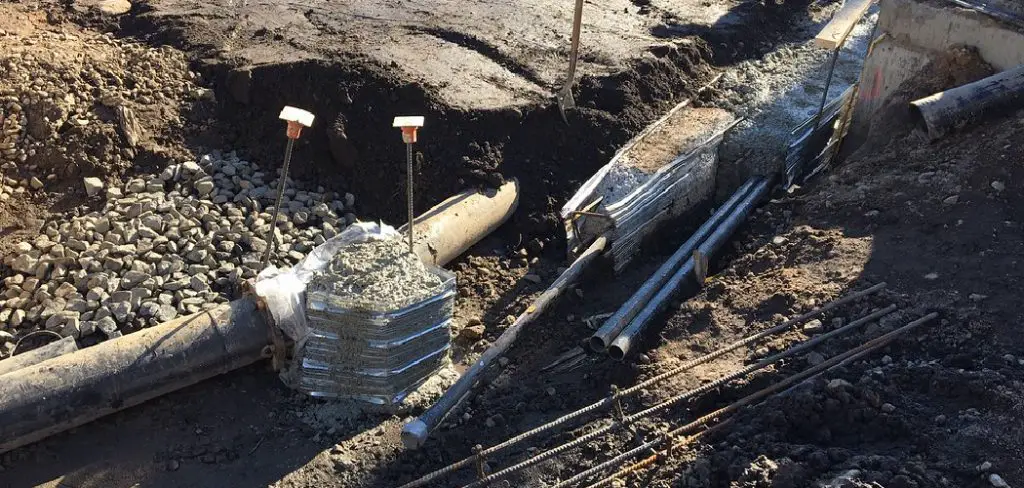
Backfilling a sewer pipe is a technical process that requires expertise and the right tools. In this guide, we will take you through how to backfill sewer pipes step-by-step. You don’t have to be a professional to do it, but it helps to have some basic plumbing knowledge and DIY skills.
10 Step-by-step Guidelines on How to Backfill Sewer Pipe
Step 1: Identify The Problem
The first step in backfilling sewer pipes is to identify the problem. Before you start digging around your yard, test the soil around the pipes to locate the break or damage. If you are unsure, call a professional plumber to inspect the pipes with the right equipment. It is important to find the exact spot where the pipes are broken or damaged so you can easily backfill them.
Step 2: Prepare The Workspace
Once you have located the damage, remove all plants, rocks, and debris from the workspace to avoid interference with the plumbing equipment. This will also give you ample space to work and keep the workspace safe. If the soil is too dry or hard, you can moisten it with water to make sure the backfilling material sticks together and fills up the damaged spot completely.
Step 3: Digging
Dig around the damaged part of the sewer pipe to expose it. The depth and width of the trench depend on the location and size of the pipe. Use a digging tool such as a shovel or a pickaxe to remove the soil from the trench. But make sure you don’t dig too deep as it can cause further damage to the pipe.
Step 4: Removing the Damaged Pipe section
Remove the damaged section of the pipe and prepare the area for the new one. Make sure there are no obstructions or debris left in the trench, and clean the pipes using water and a jet nozzle. You can also use a brush to remove any buildup in the pipe. It is important to ensure that the new pipe will fit properly in its place.
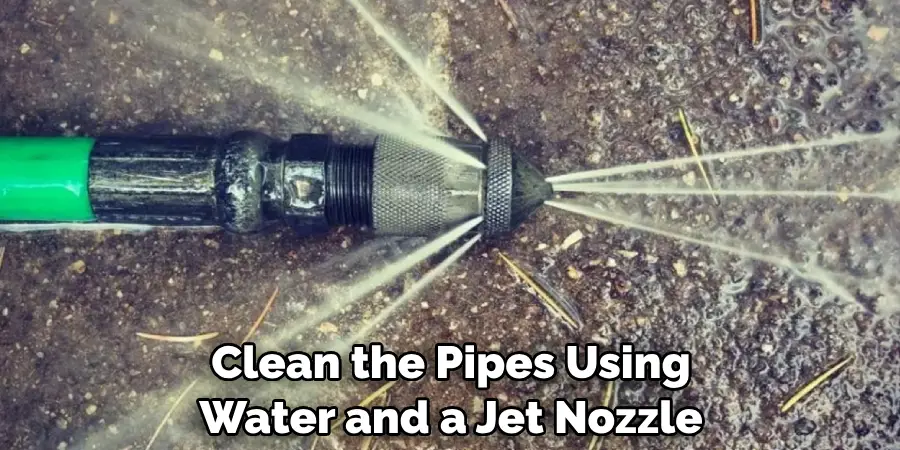
Step 5: Installing New Pipe
Install a new sewer pipe using coupling joints to connect it with the existing pipe. Make sure the joints are tight and secure to prevent leakage. Use backfill material to support the new pipe and ensure it stays in place. You can also add a plastic pipe sleeve to prevent the backfill material from entering the pipes.
Step 6: Backfilling The Trench
After installing the new pipe, start filling the trench with backfill material such as sand, gravel, or crushed stone. The backfill material should be added slowly and compacted using a tamper or a vibratory plate compactor to prevent air pockets. You can also use a garden hose to wet the soil and keep it moist as you add backfill material.
Step 7: Compacting The Soil
Compacting the backfilled soil is important to ensure stability and avoid settling. Use a vibrator or a roller machine to compact the soil in layers. Repeat this process until the soil reaches the surface level. It is important to keep the soil evenly compacted as you work your way up.
Step 8: Checking For Leaks
To check for leaks, turn on the water supply and observe the new pipe for any water leaks. If there is no water leakage, fill the trench with topsoil and plant grass or other plants to cover it. You can also use a hose to check for any leaks in the pipes. It is important to make sure the pipe is secure and leak-free before you move on to the next step.
Step 9: Clean Up
Clear all debris, tools, and equipment from the workspace and dispose of all waste in a proper manner. Make sure the workspace is clean and safe for others. It is also important to check the pipes for any clogs or blockages before you finish up. However, if you find any clogs or blockages, it is best to call a professional plumber who can take care of the problem.
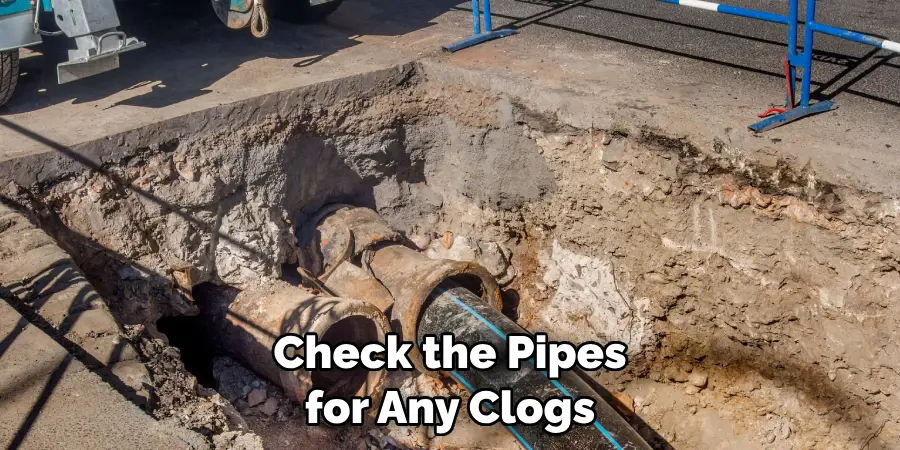
Step 10: Inspection
After completing the backfilling process, hire a professional plumbing inspector to check the work and ensure it meets the building and plumbing codes. It is important to get a professional inspection as it will help you identify any potential problems before they become serious issues.
Following these step-by-step guidelines on how to backfill sewer pipe will help you backfill your sewer pipe with ease and restore the flow of wastewater. With the right tools, expertise, and a bit of patience, you can do it safely and efficiently. Remember to always consult a professional plumber to ensure that the job is done correctly and up to code. Make sure to regularly check your plumbing
Do You Need to Use Professionals?
In most cases, it is best to hire a professional plumbing contractor to backfill sewer pipes. Professionals have the right expertise and tools to do the job safely and efficiently. They can properly inspect the work and make sure it meets building codes.
Furthermore, using professionals may reduce your risk of liability in case of any accidents or incidents during the process. Your local plumbing contractor can also provide you with valuable advice on how to maintain your plumbing system.
In summary, backfilling sewer pipes is a technical process and should be done with caution and expertise. If you don’t feel comfortable doing the job yourself, it’s best to hire a professional contractor to do it for you.
With the right tools and knowledge, they can ensure that the job is done correctly and up to code. Regularly checking your plumbing system can help you detect any issues early and save you from costly repairs in the future. Taking good care of your pipes will also help keep your home safe and hygienic.
Tips for Maintaining Your Plumbing System
- Clean out all drains regularly to avoid clogs.
- Inspect your drains regularly for any blockages or damages.
- Don’t flush anything other than toilet paper down the toilet.
- Install a water filter to keep out sediment and particles from entering the pipes.
- Check all hoses and joints for leaks or wear and tear periodically.
- Make sure there is no accumulation of wastewater or debris in the pipes.
- Remove tree roots near sewer lines to avoid any damage to the pipes.
- Don’t pour grease, oil, and other chemical down the drain as it can clog up the drains.
- Have a professional plumber inspect your plumbing system annually for any issues.
By following these tips, you can maintain your plumbing system and make sure it is functioning properly for years to come. Regular maintenance will also help prevent costly repairs in the future.

Frequently Asked Questions
Q1: Do I Need a Permit to Backfill Sewer Pipes?
A1: Yes, you will need a permit from the local authorities before you start working on your plumbing system. Make sure to check with your local building department for the necessary permits and approval.
Q2: How Long Does It Take To Backfill Sewer Pipes?
A2: The length of time it takes to backfill sewer pipes depends on the size and complexity of the project. Generally, it can take anywhere from a few hours to a couple of days for a small-sized job. For larger projects, it may take several days or even weeks.
Q3: What Are the Safety Precautions I Should Take When Backfilling Sewer Pipes?
A3: It is important to take safety precautions when backfilling sewer pipes. Make sure to wear protective gear such as gloves, goggles, and boots while working on the project. Also, be aware of your surroundings and remove any debris from the workspace to avoid accidents. Finally, avoid going in trenches that are deeper than 4 feet.
Q4: How Do I Know If My Sewer Pipe is Installed Correctly?
A4: The best way to check if your sewer pipe is installed correctly is to hire a professional plumbing inspector to inspect the work. They can properly assess the installation and make sure it meets all building codes and requirements. Additionally, you can also check for any water leaks by turning on the water supply and observing the pipe for any leakage.
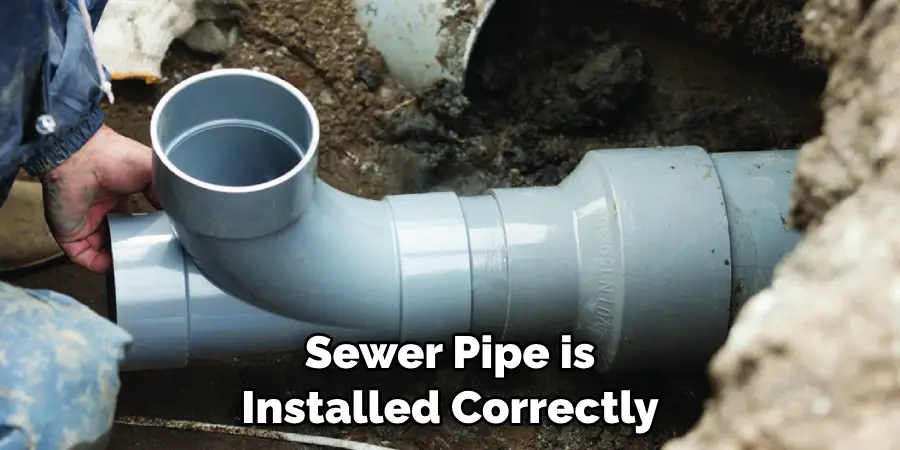
Conclusion
In conclusion, backfilling a sewer pipe is a relatively straightforward process. The key to ensuring successful and safe installation is to use the proper materials and tools, as well as understand all components of this job along the way. There are several factors involved such as trench depth, backfill material, land preparation and more that all need to be monitored closely for optimal results.
With careful planning, understanding the various elements associated with this task, and good communication skills you should have no problem getting your new sewer line up and running in no time. Now that you understand how to backfill sewer pipe, it’s time for you to get started on this important project!
Be sure to use the right materials and have everything close at hand before you begin—a bit of extra prep work goes a long way when it comes to detailed work like this. So what are you waiting for? Get going on your next project today!

